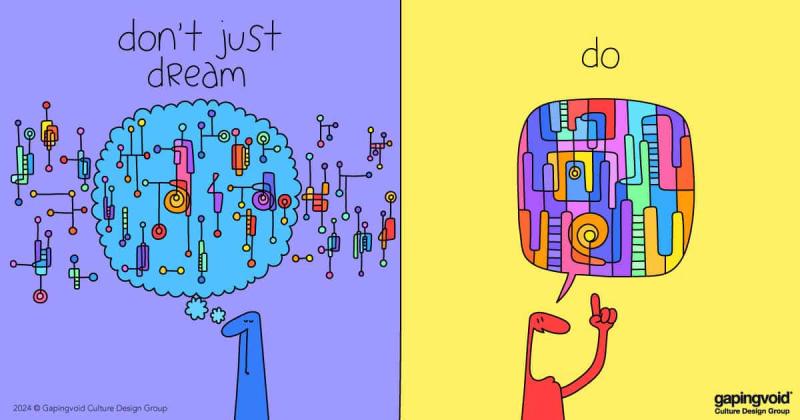I’ve had the privilege of knowing, and working with, among the best retail Financial Advisors in the English-speaking world, and I’ve noticed one thing they all have in common.
A success trait that I’ve noticed in all successful entrepreneurs, including my own Ideal Clients, is a bias towards action. The one quality that we always see in successful people is that they are decisive and take action. They’re implementors.
Less successful people struggle with action. They often even laugh about it with me and explain they’re getting ready to get ready to take action, but are currently in “learning mode,” or “research mode” or they’re studying the issues. In other words they’re doing everything except taking action towards the objective.
The good news is that this problem isn’t genetic. You don’t have to remain in Getting Ready To Get Ready mode. Thankfully, this is a mindset issue that you can switch on at any time. Being in “Action Mode” is a choice, and it’s almost always the difference between success and “less than success,” however you measure success.
There are, however, costs to deciding to move consistently into “action mode.” First, it usually requires you to do things that might be slightly uncomfortable at first. You need to be willing to make forward progress by engaging with people in a slightly different way. Anytime a person risks communicating with another person in a way that might result in a “polite decline” can be uncomfortable at first.
If you’re sitting in front of important people who have the power to say “yes” or “no” to your forward progress, that can be uncomfortable at first. But that’s the price of moving out of Getting Ready To Get Ready Mode into Action Mode. It’s only in action mode where consistent forward progress occurs.
Like most worthwhile endeavors, making the effort to move into Action Mode is a high-payoff activity. In my experience, doing whatever it takes to move away from inaction into Action Mode is the highest payoff activity, when it comes to success in business.
In studying failed businesses, it’s a cliche to discover that the CEO simply “failed to implement.” Translation, they could not figure out how to take action in the areas that mattered most. So, a commitment to Action Mode means accepting there will be failures. …Perhaps many failures. However, because you’ve decided to be in Action Mode, you always pick yourself up, re-orient yourself to the goal, and then course-correct taking positive action every single time.
So what do you need to move into Action Mode? Do you need a support system? Do you need a mentor who’s “been there, done that?” Sit down and write down all the obstacles standing between you and “Action Mode.” Then create a strategy to eliminate every obstacle on your list. Figure out what you need and commit to getting it done. Never forget, it’s just a mindset issue and you can change your mind if you have adequate resolve.


Responses